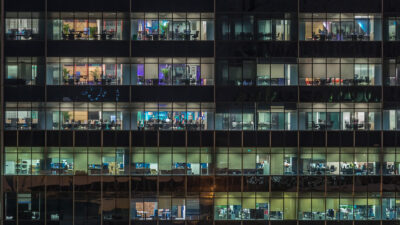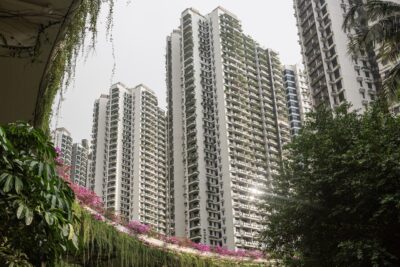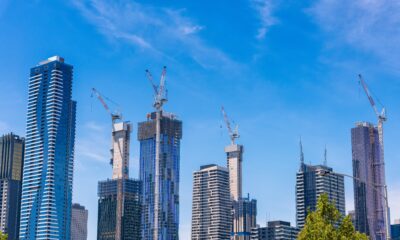Simplicity is everything at designer’s Cebu home
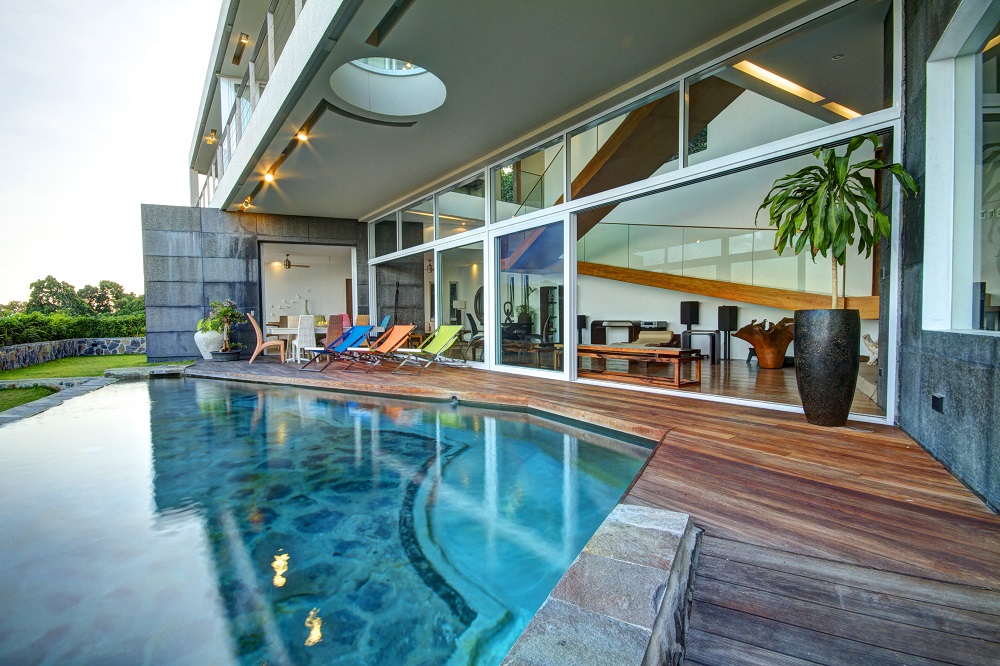
At first glance, it seems an impossible, even absurd, location for a house. The piece of land rests in one of Cebu’s most sought-after areas, and yet no one had ever attempted to construct anything of consequence on the property. Forty metres long but only 14 metres wide, the dimensions of the plot closely resemble a landing strip more than a housing lot, defying virtually all conventions and would confound most architects.
But visionary Italian-born, Philippines-based designer Carlo Cordaro isn’t “most” architects. When the man behind Atelier A first looked at the property, he decided it was the perfect place to build his home. “Personally, I like a challenge,” he says. “It’s a narrow piece of rock, almost like a road. I spent several Sunday mornings just standing there, trying to understand it. In order to build a house, first you must understand the place.”
The more Cordaro stared at the slender strip of land, the more he found himself smitten with it and the possibility to create a truly unique space for his personal residence. The unusual structure is fitting for a man whose career and creative vision have seldom adhered to the norm. At Atelier A, Cordaro has made a name for himself by creating avant-garde pieces of furniture out of sustainable materials like bamboo, abacá and coconut bark for luxury resorts and residential projects. Although he works with locally sourced Filipino materials, Cordaro favours the clean, geometric aesthetic that bespeaks his European roots.
More: JLL’s Christophe Vicic shares what’s on the horizon for Philippines property market
A few of the signature pieces from his collections, many of them leftover from catalogue shoots, can be found in Cordaro’s home. But the designer relates he prefers keeping the space uncluttered with excess furnishings.
“I didn’t put too much inside because I didn’t want to detract from the beauty of the architecture,” Cordaro says. Instead, he chose to focus on envisioning a structure that would take full advantage of its surroundings. “Maybe it’s romantic, but I always say that a house has to be like a tree. A tree grows looking at the wind, looking at the light, so I analysed all those factors,” he says.
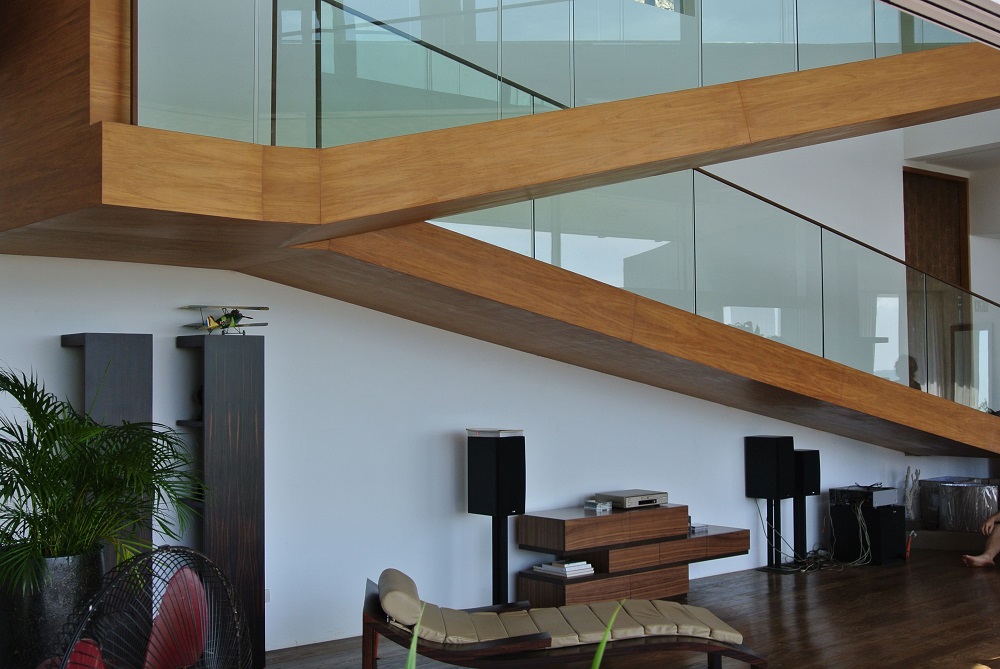
The result is something Cordaro likes to call a “bridge house” as it consists of two separate parts linked by a central space—a veranda and swimming pool, which serves as the focal point of the home. With Cebu becoming increasingly congested, the serene spot has become the designer’s respite from the urban bustle. Over the years, Cordaro has hosted countless guests, and the occasional yoga class or salsa session, in the inviting, open space.
The tastefully modern house encapsulates Cordaro’s lifelong commitment to sustainability, and is proof that one need not sacrifice luxury in order to embrace an eco-savvy design. “The house is perfectly exposed to the east, so in the morning, light floods the whole house,” Cordaro says. In addition to ensuring the whole building receives plenty of sunlight, he wanted to avoid depending excessively on artificial climate control. “I created a system, [such] that even without air-con there is very good ventilation,” he says.
Cordaro’s tendency to apply rigorously logical solutions to innovative design stems from the earlier years of his career when he worked as a financial analyst in his native country. In the 1990s, a consulting job for Cebu Fil Veneer Corporation changed the trajectory of his life. He fell hard for both the Philippines and the process of working with natural materials. He found himself growing increasingly fascinated with the process of veneer and how it can be used to transform materials like bamboo into ultra-durable, striking objets d’art.
Maybe it’s romantic, but I always say that a house has to be like a tree. A tree grows looking at the wind, looking at the light, so I analysed all those factors
“I wouldn’t say I abandoned the financial world, but I realised my passion lay in design,” Cordaro says. After the Hotel Concorde in Verona, Italy commissioned a series of furniture pieces from him in 1994, and he was hooked. Five years later, in 1999, saw him launch a collection that married bamboo with his decidedly Italian-inflected modern minimalist design philosophy.
Cordaro continues to use bamboo in ways few might dare. “I really love bamboo—the way I work with it, it can be extremely strong and structural,” he says. Sustainable local woods and fibres like abacá and coconut bark have also played a major role in statement pieces and interiors he created for up-market properties like Kandaya Resort Cebu and Asmara Urban Resort & Lifestyle Village.
The attraction to renewable resources instead of the glossy hardwoods traditionally associated with luxury, he reveals, stems from necessity. Excessive logging and poor forestry management in the 1960s and ‘70s have destroyed many of the indigenous forests in the Philippines.

While the materials tie into his own environmental sensibilities, Cordaro admits their inherent beauty is still the main reason he keeps coming back to them. “I would say this is the new luxury. Everything is moving forward. I’m trying to go backward instead, to abacá fibre and palm fibre, and those romantic things,” Cordaro says. Abacá, a grass that grows rampant throughout the island nation, replenishes itself constantly. Meanwhile, the bark of the coconut tree, which many designers overlook, produces an extraordinary visual contrast of the refined and the organic. “You can see the wild part of the nature and the part where it’s dominated by our machines. This is our way to create the beauty out of a natural material,” he says.
As sustainable as these resources are, they’re not exactly the most economic option. The raw materials themselves, while relatively inexpensive, command considerable price tags after the labour-intensive processes and craftsmanship they undergo. “There’s a perception that bamboo is cheap, but the cost of the way I do bamboo is higher than a beautiful American walnut,” he says. Such hardwoods may be an easy sell as they are often associated with opulence, but Cordaro sees dwindling forests and believes the choice is clear. “American walnut is a tree that takes 60 years to grow, whereas the bamboo, after 36 months, is already 25 metres high. If you think about it analytically, the winner is bamboo,” he points out.
In the future, Cordaro hopes to continue pushing the boundaries of sustainable design. In the meantime, you’ll find him soaking up the sun in his little piece of paradise. At the end of the day, Cordaro says, “The real difficulty is not to design a beautiful, stunning structure, but to transfer an emotion.” Looking totally cool and at peace, he seems to have successfully achieved this in his contemporary, unique, airy oasis.
This article originally appeared in Issue No. 149 of PropertyGuru Property Report Magazine
Recommended
Meet the vagabond architect behind India’s housing scene
Vinu Daniel is helping to shake up India’s home building setting
Where Asian real estate stands in a fragmented, warmer world
Asia’s real estate industry faces many and varied challenges as external factors continue to bite
6 sights to see in Singapore’s Marine Parade
Handily located Marine Parade has emerged as a vibrant investment choice in the Lion City
There’s a township dedicated to health and wellness in Malaysia
Property seekers have their health needs catered for at KL Wellness City





